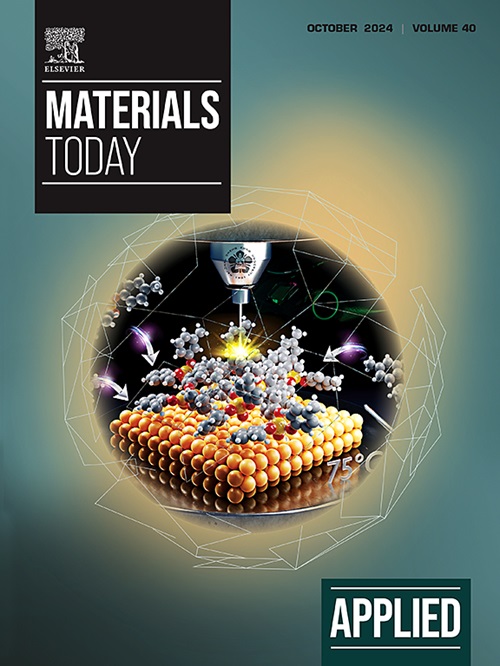Electrospinning and melt electrowriting of a tunable triblock-copolymer composed of poly(ε-caprolactone) and poly(L-lactic acid) for biomedical applications
IF 6.9
2区 材料科学
Q1 MATERIALS SCIENCE, MULTIDISCIPLINARY
引用次数: 0
Abstract
Both electrospinning (ES) and melt electrowriting (MEW) garner emerging interest within the field of biomedical applications. Poly(ε-caprolactone) (PCL) is still the gold standard for both techniques, demonstrating excellent processability due to its solubility, melt flow properties and thermal stability. However, when evaluating biomaterials for soft tissue applications, PCL exhibits limitations such as low elasticity and extended biodegradation times. Additionally, the limited availability of materials that are processable by MEW constrains their broader clinical translation. To address this limitation, a tunable triblock-copolymer of PCL and poly(L-lactic acid) (PLLA) is synthesized and processed using ES and MEW. This synthesis employs a PCL-diol backbone with a molar mass of 30 000 g mol, to which various lengths of PLLA end-blocks are added on both termini (PLLA-b-PCL-b-PLLA). The successful incorporation of these tunable end-blocks is verified through spectroscopic analysis. The ES of PLLA-b-PCL-b-PLLA reveals excellent fiber formation, with fiber diameters ranging between 2–4 µm as the PLLA molar mass increases. The tunable nature of the polymer allows for MEW at 90 °C, producing fibers with diameters ranging between 40–50 µm. Additionally, the materials exhibit adjustable mechanical properties and biodegradation rates by varying the PLLA segment lengths. Finally, cell testing using MC3T3-E1 cells demonstrates the polymer's excellent biocompatibility.用于生物医学应用的由聚(ε-己内酯)和聚(L-乳酸)组成的可调三嵌段共聚物的电纺丝和熔融电写入技术
在生物医学应用领域,电纺丝(ES)和熔融电编织(MEW)都受到了越来越多的关注。聚ε-己内酯(PCL)仍然是这两种技术的黄金标准,它的溶解性、熔体流动性和热稳定性使其具有出色的可加工性。然而,在评估软组织应用的生物材料时,PCL 表现出了一些局限性,如弹性低和生物降解时间长。此外,可通过 MEW 加工的材料有限,也限制了其更广泛的临床应用。为了解决这一局限性,我们合成了一种可调的 PCL 和聚(L-乳酸)(PLLA)三嵌段共聚物,并使用 ES 和 MEW 进行了加工。这种合成方法采用摩尔质量为 30 000 g mol 的 PCL 二元醇骨架,并在其两端添加不同长度的 PLLA 端块(PLLA-b-PCL-b-PLLA)。通过光谱分析验证了这些可调端基的成功加入。聚乳酸-b-PCL-b-PLLA 的 ES 显示纤维形成效果极佳,随着聚乳酸摩尔质量的增加,纤维直径在 2-4 微米之间。聚合物的可调性允许在 90 °C 时进行 MEW,生成的纤维直径在 40-50 µm 之间。此外,通过改变聚乳酸片段的长度,材料还能表现出可调的机械性能和生物降解率。最后,使用 MC3T3-E1 细胞进行的细胞测试表明,这种聚合物具有良好的生物相容性。
本文章由计算机程序翻译,如有差异,请以英文原文为准。
求助全文
约1分钟内获得全文
求助全文
来源期刊

Applied Materials Today
Materials Science-General Materials Science
CiteScore
14.90
自引率
3.60%
发文量
393
审稿时长
26 days
期刊介绍:
Journal Name: Applied Materials Today
Focus:
Multi-disciplinary, rapid-publication journal
Focused on cutting-edge applications of novel materials
Overview:
New materials discoveries have led to exciting fundamental breakthroughs.
Materials research is now moving towards the translation of these scientific properties and principles.
 求助内容:
求助内容: 应助结果提醒方式:
应助结果提醒方式:


